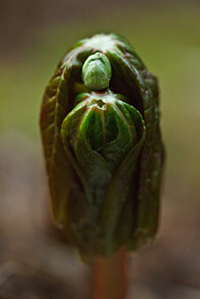Quite a few substances used in traditional medicine in China or other countries have received Food and Drug Administration (FDA) approval as cancer drugs… and their numbers are growing. Some examples are:
Arsenic trioxide, made from arsenic sulfide ore, has been used therapeutically for more than 2,400 years. Following promising reports from China, the agent was tested in clinical trials and received FDA approval in 2000 for patients with acute promyelocytic leukemia who have not responded to other therapies or whose disease has recurred.
Camptothecin, isolated from the bark and stem of a tree native to China, was long used as a cancer treatment in traditional Chinese medicine. When preliminary clinical trials of the compound showed encouraging results in patients with leukemia, chemists made synthetic versions that retain its anticancer properties while reducing its harsh side effects. Two of these synthesized versions, or analogues, have been approved for the treatment of chronic lymphocytic leukemia.

Podophyllotoxin, isolated from the Mayapple plant that grows in forests in the eastern United States, has a long history as a medicinal agent. A gel made from the compound is used to treat certain kinds of warts, and a synthetic version is used to treat lung cancer, testicular cancer, lymphoma, and certain forms of leukemia and sarcomas.
Vinca alkaloids were derived from the Madagascar periwinkle plant and, according to folklore, were useful in treating diabetes. Scientific testing found they had no antidiabetic properties but could extend the lives of mice with certain forms of leukemia. Synthesized forms of the alkaloids include two of the most common chemotherapy agents in use today, vincristine and vinblastine. Cancers treated with vinca alkaloid-derived drugs include acute leukemia, neuroblastoma, Wilms tumor, Hodgkin and non-Hodgkin lymphomas, breast cancer, melanoma, and uterine cancer.
Homoharringtonine, which comes from an evergreen shrub indigenous to China called Plum Yew or Cowtail Pine, was approved by the FDA last year for the treatment of adult patients with chronic myelogenous leukemia (CML) who aren’t helped by agents known as kinase inhibitors.

Indirubin, extracted from the indigo plant, is part of a traditional Chinese preparation used to treat CML. Laboratory and animal studies suggest it may be an effective treatment for patients, but clinical trials have not yet been conducted.
Natural compounds from Chinese medicine currently being studied as potential cancer drugs include astragalus (a large family of herbs and shrubs); scutellaria (flowering plants of the mint family, used in traditional Chinese medicine to strengthen the immune system); and indigofera (a large family of flowering plants, used to alleviate pain).
Some naturally-derived agents are used as stand-alone treatments; others are part of combined therapies. Because some natural therapies can decrease the effect of chemotherapy drugs, it’s important for patients to inform their physicians of any alternative treatments they are using.
David Rosenthal, MD, clinical co-director of the Leonard P. Zakim Center for Integrative Therapies, provided information for this article.

I really gained from and enjoyed this article. I spent significant parts of my career working in Asia and have used and respect Eastern approaches to medicine.
I am a long term patient [metastatic melanoma and lymphoma] @ MD Anderson in Houston. As a patient, I always happy to see an increase in shared research and a growing openess to forms of care beyond traditional western medicine.